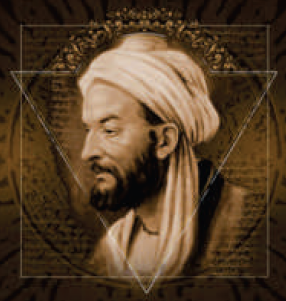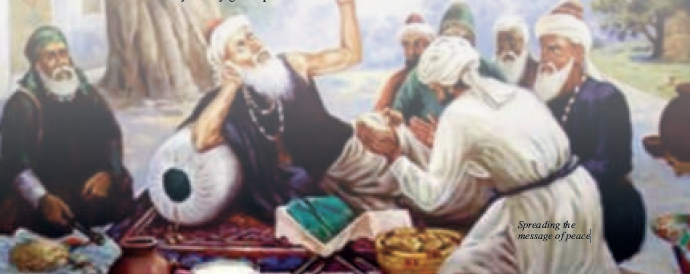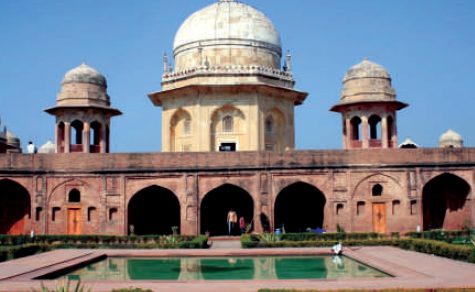Panipat ...land of the sufis
This is a collection of articles archived for the excellence of their content. Readers will be able to edit existing articles and post new articles directly |
Panipat ...land of the sufis
By Mobashir Hasan and Zakia Zaheer
India Harmony VOLUME - 1 : ISSUE - 5 JULY-AUGUST, 2012
Panipat, was a small town, fifty-five miles north of Delhi. It was an ancient town of several thousand years. To the east of the town flowed the river Jamuna which meandered in a several miles wide Khadar. Along the bank of the river were forests of huge Dhak trees that bordered the fertile lands of the town. To the west were extensive marshes. Between the marshes on one side, and forest on the other, threaded a katcha road. Connecting Delhi with the vast lands to the north and beyond, the road had immense strategic importance.
It was short and direct route to Delhi. Scores of conquerors had taken this route since time immemorial. Along the road, Rajahs and kings had built wells and caravan sarais. The British christened it the Grand Trunk Road. The agricultural plains around the town and the town itself provided an ideal place to mount the defence of Delhi against the invaders from Northwest. The open lands of the town came to be known in history books as the maidaan-jang of Panipat (the battle ground of Panipat). Until British egemony was established in 1820, battles, big and small, frequently raged in and around Panipat -- almost four for every century. Those of 1526, 1556 and 1761 proved fateful for the history of India.
For the people of the town every battle brought death and destruction, loot and plunder. The houses in the town had to have underground shelters, hiding places which the children of the house discovered only as they grew up. All houses had doors and windows connecting one house to the next. Household stories of how a great-grand mother of a family hid her jewellery and escaped before looters arrived, were common.It was only natural that through the ages the people of the town should develop hatred for wars and yearning for peace. They should begin to abhor violence and want to adopt nonviolence as their creed. They should engage themselves in spreading knowledge, peace and love. And that is exactly what they did. For political reasons, the religious elite of Panipat and the kings of Delhi maintained a benevolent attitude towards each other. In recognition of its political influence, Sultan Ghiasuddin Balban had exempted the lands of Panipat from the payment of land revenue. For the next six centuries no government considered it prudent to discontinue the exemption. The Muslims in Panipat were three times the number of the Hindus. The Hindus were mostly banias who owned shops and lent money. The Muslims who were land holders dominated. Hindu-Muslim relations were most cordial. Even in British days, the chief police officer of the town was always a Muslim. There were poor people in Panipat but there was no poverty of the type seen in modern times. Every family had a house or the right to live in a house. Once a house became a ruin due to demise of the residents, it would take seven generations before a new house could come up on the site. This speaks volumes for the total lack of population growth in the town.
The impact of the teachings of the patron saint of Panipat, the Bu Ali Shah Qalandar on the populace was everlasting. He laid stress on the place of the individual and his freedom to chart his own course of action. Not many are aware that Panipat became the land of the Sufis as early as the times of Mahmud Ghaznavi With Ghaznavi came in the 13th Century, a Sufi named Makhdoom Jalaludin Kibria whose shrine still exits in Panipat. He decided to establish his “dera” there. Why did he choose Panipat to establish his Sufi centre? It was a dangerous place to live in, where bloody battles were fought in every century. Panipat was an ideal battleground for those who invaded India from the North and those who defended the country from the South. It lay on a piece of relatively high ground between vast marshes on the West and the River Yamuna on the East. There was no good direct road to it; so it was not suitable for trade or commerce. Therefore, besides being a suitable battle ground, it was also a safe haven for Sufis. Makhdoom Jalal-ud Din's “Dera” became a great centre for the promotion of peace and harmony and attracted students from far and wide. He was a great scholar of Islam, and a fervent preacher of Humanity. The most famous Sufi among his successors was Hazrat Gaus Ali Shah Qalander, who was both a scholar, a preacher of harmony and a poet. His most famous couplet is:
“Haidereem, qalanderam hastam, Banda e Murtaza Ali hastam”
“I am a qalander (One who has abandoned all wordly possessions, including outer trappings-clothes, belongings etc) and am a devotee only of Ali.”
This invited the wrath of a large number of traditional Muslim Scholars who demanded the death penalty for him for calling himself Banda-e- Ali, which amounted to 'Shirk' (including anyone else in the rank of Allah). Balban was the King of the region and this created a serious problem for him as Qalander was immensely popular among both Hindus and Muslims. This political and religious conflict was resolved by Khwaja Malik Ali, the great grandson of Abdullah Peer-e- Heirat who was a renowned Sufi Saint from Afghanistan. He lived in Herat, Afghanistan. Abdullah was greatly revered by all. His beautiful Mazar still exists in Herat where thousands of people come and pray daily.
Malik Ali pronounced his own edict. He decided and announced that it will be unIslamic to execute Qalander, as the whole concept of Qalander was to be able to do as you see right, and live without any restraints. Balban heaved a sign of relief. He invited Malik Ali to come to India, which he did, along with his family. But he did not go to Delhi, but to Panipat, which by then, had become a great center for Islamic scholarship, and for the promotion of peace, harmony and tolerance. The Urdu poet an acknowledged iconoclast, Hali was a direct descendant of Khwaja Malik Ali some 600 years down the line.
Ghiasud Din Qalander lived for 115 years, from 1209 to 1324. He was revered by all sections of the people for his deep spirituality and his miraculous powers. There are many legends about him. One version is that he stood in water for 36 years doing “ibadat” (Obedience and submission), he was awarded the title of “BU Ali “(Fragrance of Ali). After receiving this rutba he was visited by many other Sufi saints. Another legend is that the Holy Prophet visited him in his dream and offered him a wish, Qalander asked him to make him a disciple of Hazrat Ali (the sonin- law of the Holy Prophet). The Holy Prophet touched him and he had Ali's fragrance in his body and soul.
Perhaps the true story is not known but the fact is that he is Panipat's patron saint and to date people of all religions come to his Mausoleum every Thursday and also in great numbers from all over India for his Urs, In Sufism, Urs means URUS or marriage and is celebrated with joy as it is the day of the Sufi's final union at last with his beloved, the ultimate murshid (mentor) - GOD!!
Bu Ali's tomb was built in Panipat by Mahabat Khan, a general in the service of Jehangir, Also buried in its enclosure is Mahabat Khan himself, and Ibrahim Lodhi, who was killed in the battle of Panipet in 1526. The enclosure also houses the mazar of Panipat's most famous poet, Maulana Hali.
During Qalander's time Panipat had become a great place of learning. Shaikh Ismail, a historian has mentioned at least 1400 scholars of Arabic, Persian and even Sanskrit in the colleges of Panipat who came from many lands. These languages were studied by Hindus and Muslims alike. This gave rise to a unique culture unlike anywhere in India, All Muslim boys were supposed to memorize the Quran. The discussion among people was greatly influenced by teachings of Qalandri which freed an individual to determine his own philosophy of life. One could see a number of fakirs in a trance like state, but no one bothered them. They had no desire for material things, Even visiting Hindu sadhus would get intoxicated by the spirituality and teachings of Shah Qalander.
Iqbal writing about the Qalader philosophy says:
Apnay mun mein doob kar pa ja suragh e zindagi Tu agar mera naheen banta na bun, apna to bun Paani paani kar gai mujh ko qalander ki yeh baat Tu jhuka jub gair ke aagay, na tun tera na mun Delve deep in your soul and you will find the secret of life's scroll……………
IF you can not be mine, matters not, be atleast true to thy own soul
I was really ashamed when I heard a Qalander to me extol…………………… ……………… IF you pay homage to strangers, then the heart be yours nor the soul
Panipat being a Sufi centre since 13th Centaury, there have been a number of Sufi since Bu Ali. To name a few:
Hazrat Sheikh Jalaluddin Makhdoom Kabirul-
Aulia Chishti Sabiri Hazrat Sheikh Shamsuddin Turk, Panipati Hazrat Maulana Moiz-zud-Din Daulat Abadi Maulana Najib-ud-din Samarqandi Maulana Qutb-ud-Makki Qazi Zia-ud-din Sunami Hazrat Maulana Siraj-ud-din Makki Maulana Zahiruddin Bukhari Sheikh Sadr-ud-din Qaunavi Mufti Shaeikh Sheikh Abdus-sami Danishmand
One can still find their Mazars well visited in Panipat bearing testimony to the fact that it was not only a city of battles, but of scholars, reformers, poets and Sufis as well.




